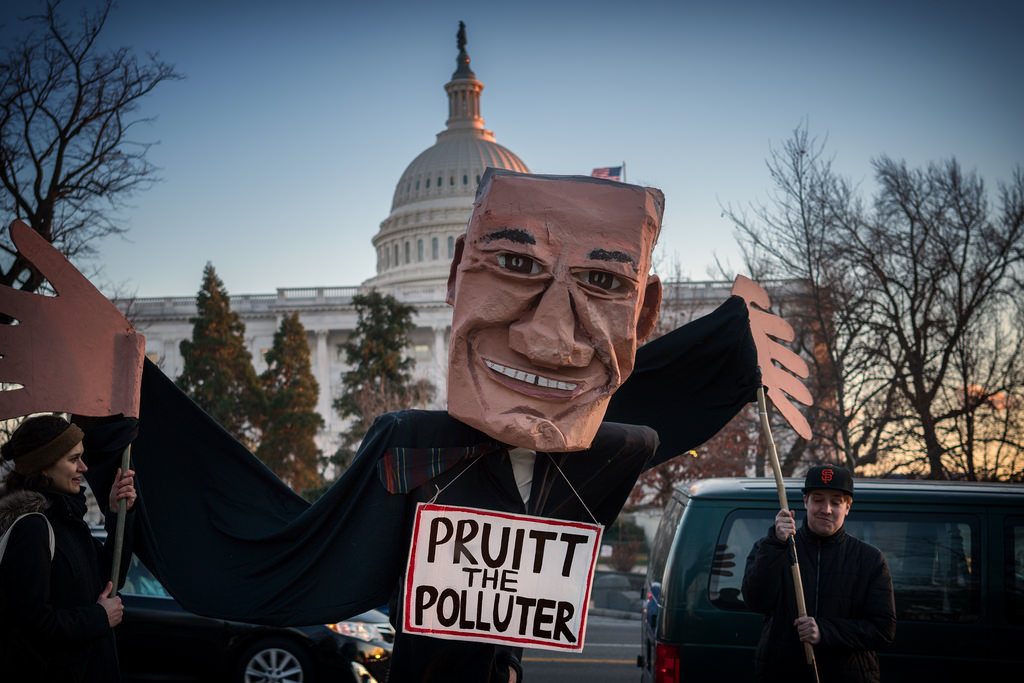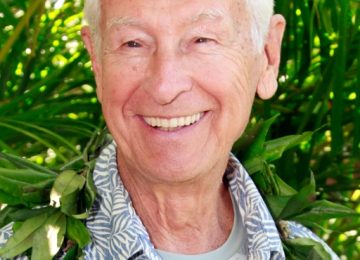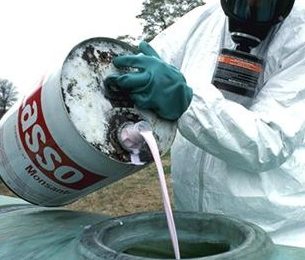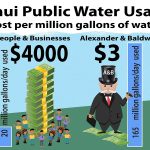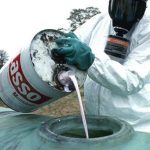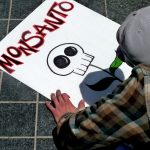Against the advice of the Environmental Protection Agency’s own scientists, President Trump’s newly appointed EPA chief, Scott Pruitt, has refused to ban the dangerous pesticide chlorpyrifos. “We are returning to using sound science in decision-making, rather than predetermined results,” said Pruitt.
Monsanto reportedly sprays around 140 acres of land on Maui and Molokai with the neurotoxin.
Back in 2015, the Obama administration had proposed to ban the pesticide from all farms nationwide because of the harm it potentially causes children and farm workers.
The ban could have taken effect this year. Instead, Trump’s new EPA commissioner, a controversial anti-environmentalist who previously sued the EPA 14 times as Attorney General of Oklahoma, has decided to turn the clock back on years of research and allow the toxic pesticide to continue to be applied on agrochemical-laced farms like those run by Monsanto on Maui and Molokai.
As of 2014 figures, the amount of chlorpyrifos sprayed per acre on Kauai by GMO seed companies such as Syngenta and Dow AgroSciences, was more than 10 times greater than the national average.
People are exposed to chlorpyrifos through residues on food, drinking water contamination, and toxic spray drift from pesticide applications.
Since the 1990s a number of studies have linked chlorpyrifos, which is manufactured by the Dow Chemical Co., to a variety of neurological problems, A study in the British journal The Lancet Neurology concluded that chlorpyrifos is among a dozen chemicals commonly found in the environment that “injure the developing brain” of children.
In 2010, Dana Boyd Barr of Emory University in Atlanta, Georgia, looked at Mexican-American children living in agricultural regions of California and found that prenatal and early childhood exposure to organophosphates can increase the risks of neurological disorders such as attention-deficit/hyperactivity disorder (ADHD).
A University of California-Berkeley’s study of farm worker children in Salinas Valley, found “a statistically significant 7 point” reduction in IQ among exposed children.
The CHARGE study (Childhood Autism Risks from Genetics and the Environment) found that the nearby application of agricultural pesticides greatly increases the risk of autism. Women who lived less than a mile from fields where chlorpyrifos was sprayed during their second trimesters of pregnancy, had their chances of giving birth to an autistic child more than triple.
One of the most recent studies, by researchers at Columbia University, measured the levels of chlorpyrifos in blood taken from umbilical cords when babies were born. The conclusion: Even low to moderate levels of exposure to chlorpyrifos during pregnancy may lead to long-term, potentially irreversible changes in the brain structure of the child.
Last November, the EPA released an updated assessment of the risks linked to chlorpyrifos and concluded that its current safety standards were not enough. “We revised our human health risk assessment and drinking water exposure assessment for chlorpyrifos. The revised analysis shows risks from dietary exposure (i.e., residues of chlorpyrifos on food crops) and drinking water.”
The assessment found that all exposure to chlorpyrifos through food exceeds safe levels of the chemical. The most exposed population is children aged between one and two years old. On average, this vulnerable group can be exposed to 14,000 times the level of chlorpyrifos the EPA deems safe.
The EPA found chlorpyrifos contaminates drinking water, and it drifts to schools, homes, and fields in toxic amounts at more than 300 feet from the fields. And field workers face unacceptable risks from exposures when they mix and apply chlorpyrifos and when they enter fields to tend to crops.
Armed with all this alarming information Trump’s EPA boss declined to act in the public interest, continuing to expose populations around the nation, including Maui, to this neurotoxin.
In a sign of backroom collusion, Donald Trump announced in December that Dow’s CEO, Andrew Leveris, will head the American Manufacturing Council in his administration, after Dow Chemical donated $1 million to Trump’s inaugural committee. Dow lobbyist Mike McKenna was a key player on the Trump transition team.
The chemical giant spent more than $13 million in lobbying costs in 2016.
Chlorpyrifos’ development is linked to Germany’s Nazis past when scientists developed organophosphates during World War II as nerve gas agents. German chemist Gerhard Schrader first documented the effects of the chemicals on the human nervous system while trying to develop pesticides to protect food for the Nazi war effort.
Schrader noted in 1936 after he and a colleague were severely sickened by a mere drop of organophosphate that landed on a lab bench near them, people who were exposed choked, shook, vomited, and sweated.
Because exposure sometimes led to seizures, comas, and death, the discovery spawned the use of organophosphates as weapons, and Schrader spent much of the war producing one of these first nerve agents, Tabun, at a secret Nazi lab. Schrader was later hired by the Bayer company.
After the war, the chemical companies adapted the organophosphates to be used as pesticides, primarily as insecticides.
“They’re considered junior-strength nerve agents because they have the same mechanism of action as nerve gases like sarin,” explains environmental scientist Boyd Barr.
Chlorpyrifos was banned in 2000 for all household use in the U.S.
Previously in 1995 the EPA caught Dow hiding hundreds of health related lawsuits involving chlorpyrifos and fined the company $876,000 for belatedly reporting 288 possible adverse reactions.
In one lawsuit where Dow denied liability the company finally accepted responsibility (and paid out $10 million) when animal tests performed by Duke University’s Professor Abou-Donia, showed that chlorpyrifos, when combined with the other chemical, caused “catastrophic destruction” of the nervous system in lower doses than it would have alone.
While Dow claimed the pesticide was safe, a review of the company’s own studies by Stanford neuroscientist Robert Sapolsky concluded they were “scientifically worthless,” and noted, “every one of the errors in the papers worked in Dow’s favor.”
In 2003, Dow paid a $2 million fine to the State of New York for lying in ads that chlorpyrifos was safe. “By misleading consumers about the potential dangers associated with the use of their products, Dow’s ads may have endangered human health and the environment by encouraging people to use their products without proper care,” said Attorney General Elliot Spitzer.
In one ad Dow proclaimed: “Products containing chlorpyrifos have wide margins of safety that protect users and consumers, including infants and children. There is simply no credible scientific evidence that Dursban (chlorpyrifos) products harm people or the environment when used properly.”
Reacting to the EPA’s shocking decision to give chlorpyrifos a pass,
Erik Nicholson, National Vice President of United Farm Workers
protested: “Without the ban, farmworkers, their children and others
can’t escape exposure because the poison is in their air they breathe,
in the food they eat, the soil where children play. We all have a
basic right to a healthy life.”


